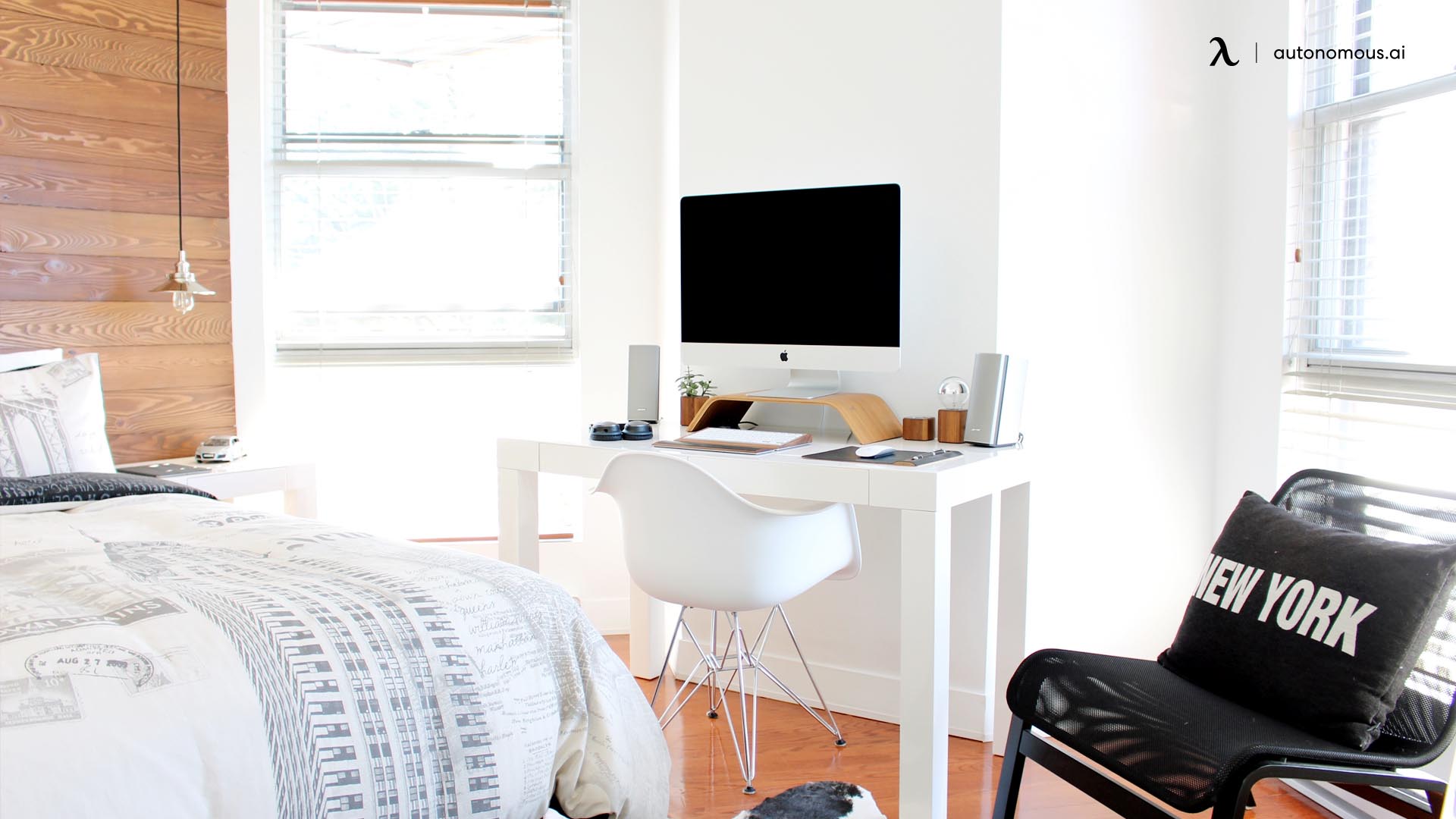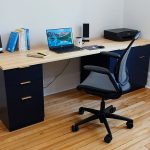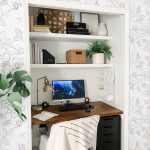I. Introduction: The Evolution of the Modern Home Workspace
In today’s rapidly evolving work culture, the line between professional and personal life is increasingly blurred. As remote work becomes the norm for many individuals, the need for a dedicated workspace within the home has grown exponentially. However, not everyone has the luxury of a separate home office, leading to the fusion of living spaces that serve dual purposes. One such space is the bedroom, which can be transformed into a harmonious blend of restful retreat and productive workstation. This article delves into the art of creating a bedroom with desk space, exploring design strategies, essential elements, and tips to ensure that both work and rest coexist seamlessly.
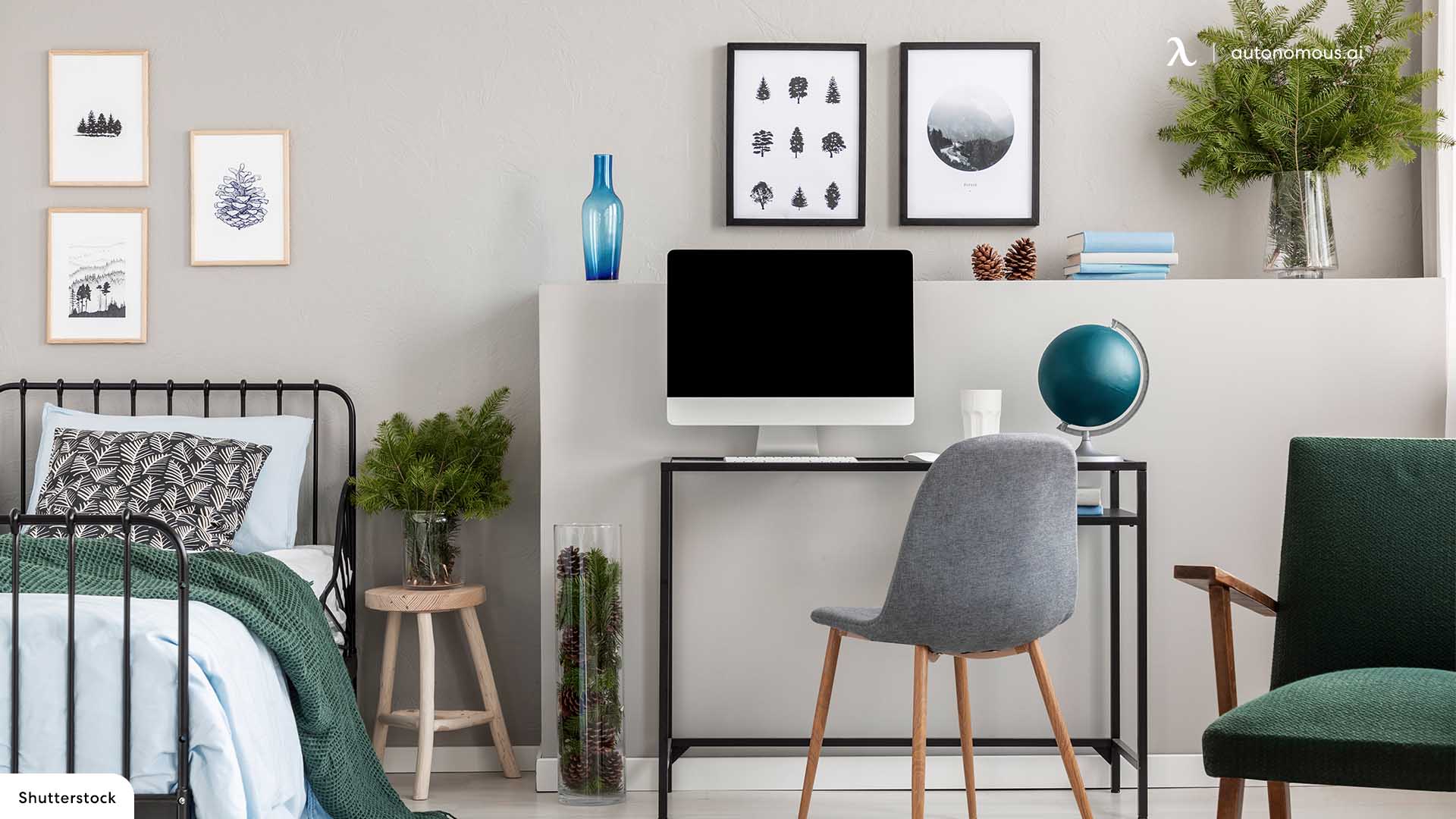
II. Spatial Planning: Maximizing Functionality without Sacrificing Comfort
A. Zoning Your Space: The Corner Desk Concept
The first step in designing a bedroom with a desk area is to establish distinct zones for work and relaxation. A corner desk is an ideal solution, as it utilizes often underutilized space and creates a natural partition within the room. By situating the desk in a corner, you maintain the bedroom’s primary function while carving out a dedicated workspace that feels separate yet integrated.
B. Flexible Furniture: The Transformative Power of Multifunctional Pieces
Investing in multifunctional furniture can significantly enhance the efficiency of your bedroom workspace. Consider a wall-mounted Murphy desk that folds away when not in use, or a daybed that doubles as a cozy reading nook during downtime and transforms into a work surface when needed. These versatile pieces help minimize clutter and maintain the bedroom’s tranquil atmosphere.
C. Strategic Storage: Keeping Clutter at Bay
An organized workspace is crucial for maintaining focus and promoting relaxation in the bedroom. Incorporate ample storage solutions, such as floating shelves, built-in cabinets, or under-desk drawers, to keep work materials tidy and out of sight during non-work hours. This not only streamlines your workflow but also preserves the serenity of your sleep sanctuary.
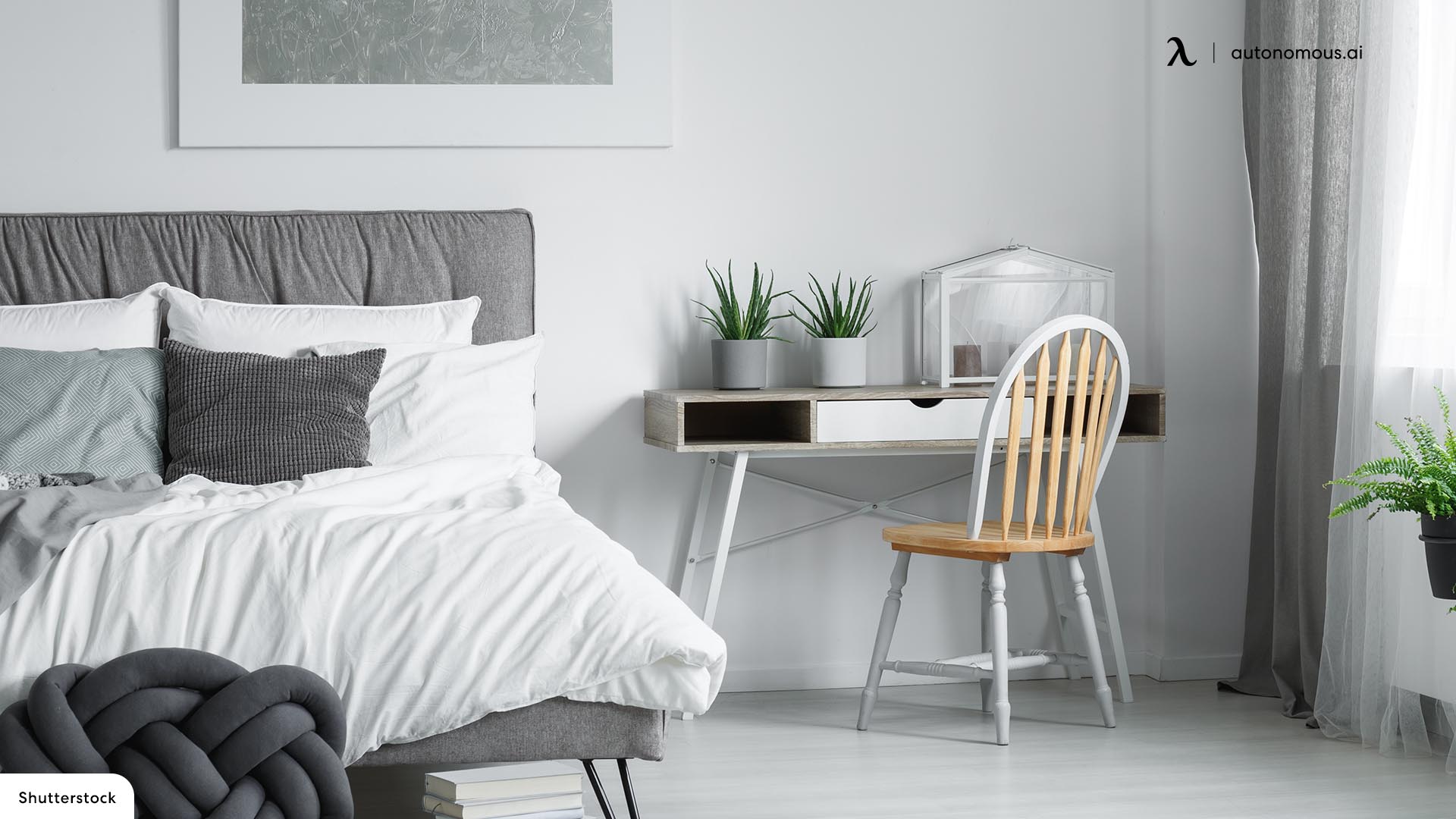
III. Lighting Design: Illuminating Productivity and Relaxation
A. Task Lighting: The Key to Optimal Work Performance
Proper task lighting is vital for reducing eye strain and enhancing productivity at your bedroom desk. Install a flexible, adjustable desk lamp with warm white light (around 3000K) to illuminate your work surface without causing glare or disrupting the room’s overall ambiance. Additionally, consider incorporating dimmer switches or smart bulbs to adjust the brightness according to your tasks and mood.
B. Ambient Lighting: Creating a Calming Atmosphere for Rest
While task lighting caters to work needs, ambient lighting sets the tone for relaxation in your bedroom. Soft, diffused light from pendant lamps, floor lamps, or wall sconces can create a warm, inviting atmosphere conducive to unwinding after a long day. Dimmable options allow you to adjust the intensity for reading, meditation, or sleep, ensuring that your bedroom remains a sanctuary for rest and rejuvenation.
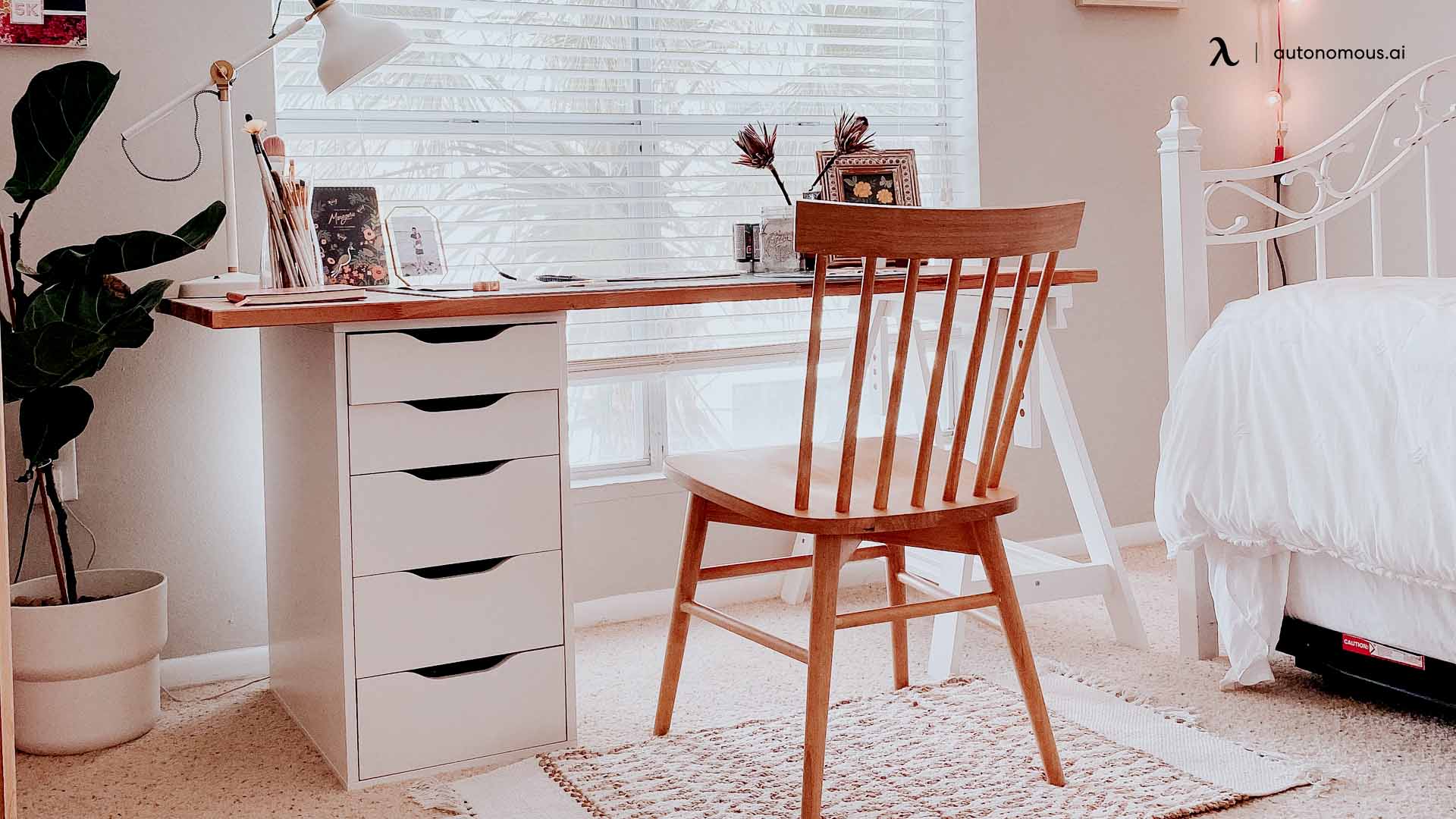
IV. Color Scheme and Materials: Balancing Energy and Tranquility
A. Choosing a Soothing Color Palette
Colors have a profound impact on our mood and energy levels. For a bedroom with a desk space, opt for a soothing, neutral color palette like soft blues, greens, grays, or earthy tones. These colors promote relaxation and can help alleviate work-related stress. Use bolder accents or wallpaper in your workspace to add visual interest without overwhelming the serene bedroom environment.
B. Textures and Materials: Invoking Warmth and Comfort
Introduce a mix of textures and materials to create depth and warmth in your combined bedroom-office. Layer soft textiles like plush rugs, cozy throws, and comfortable bedding to invite relaxation. In the workspace, incorporate materials like wood, metal, or glass to evoke professionalism and balance the overall aesthetic. Ensure that these elements complement each other, fostering a cohesive and harmonious atmosphere.
V. Personalization and Ergonomics: Tailoring Your Space for Optimal Well-being
A. Ergonomic Essentials: Prioritizing Health and Comfort
Invest in an ergonomic chair and adjustable desk to maintain proper posture and prevent discomfort during extended work sessions. Add accessories like wrist rests, monitor stands, and footrests to further enhance comfort and reduce strain. Remember, a well-designed workspace not only boosts productivity but also supports your physical health.
B. Personal Touches: Infusing Personality and Inspiration
Incorporate artwork, photographs, plants, or decorative objects that inspire and motivate you. These personal touches can help differentiate your workspace from the rest of the bedroom and foster a sense of ownership and pride in your creative haven. Moreover, they contribute to the overall aesthetic, making your bedroom a unique reflection of your personality and style.
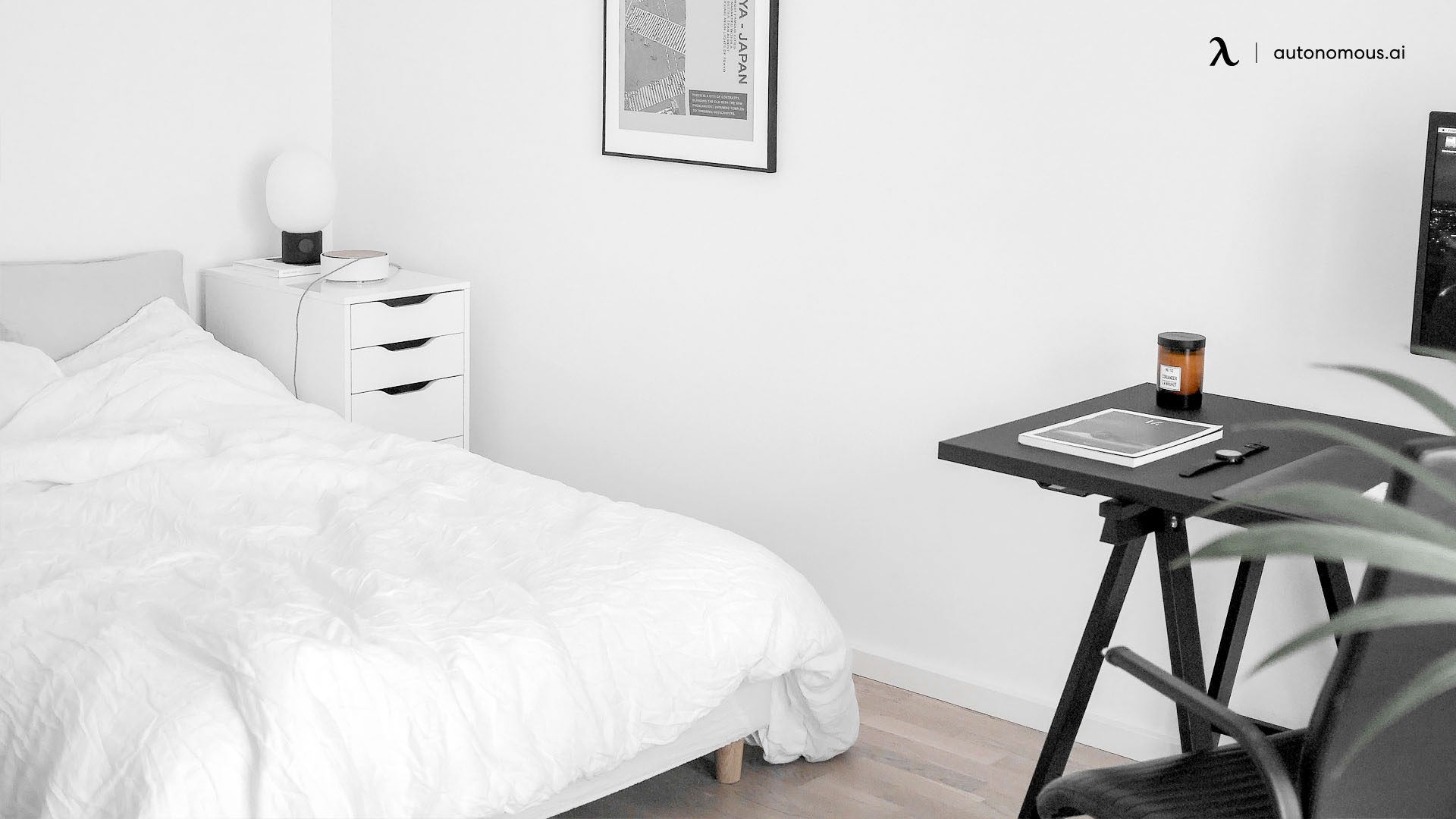
VI. Acoustics and Sound Control: Ensuring a Peaceful Haven
In a bedroom that doubles as a workspace, managing noise levels is crucial for maintaining focus during work hours and promoting restful sleep at night. Implementing effective sound control measures can significantly enhance the overall functionality and comfort of your combined space.
A. Sound Absorption: Softening Echoes and Reducing Distractions Integrate sound-absorbing materials such as acoustic panels, fabric-covered walls, or plush carpets to minimize echoes and dampen external noise. These elements not only improve the acoustics of your workspace but also contribute to the cozy, relaxing atmosphere of your bedroom. Additionally, consider using noise-cancelling headphones or a desktop soundbar with active noise cancellation features during focused work sessions.
B. Noise Barriers: Shielding Your Sanctuary from External Intrusions If your bedroom is located in a noisy part of the house or faces a busy street, invest in quality window treatments like thick curtains, cellular shades, or double-glazed windows to block out unwanted sounds. You may also want to explore the installation of soundproofing materials like mass-loaded vinyl or acoustic caulk around doors and windows to further enhance the noise barrier.
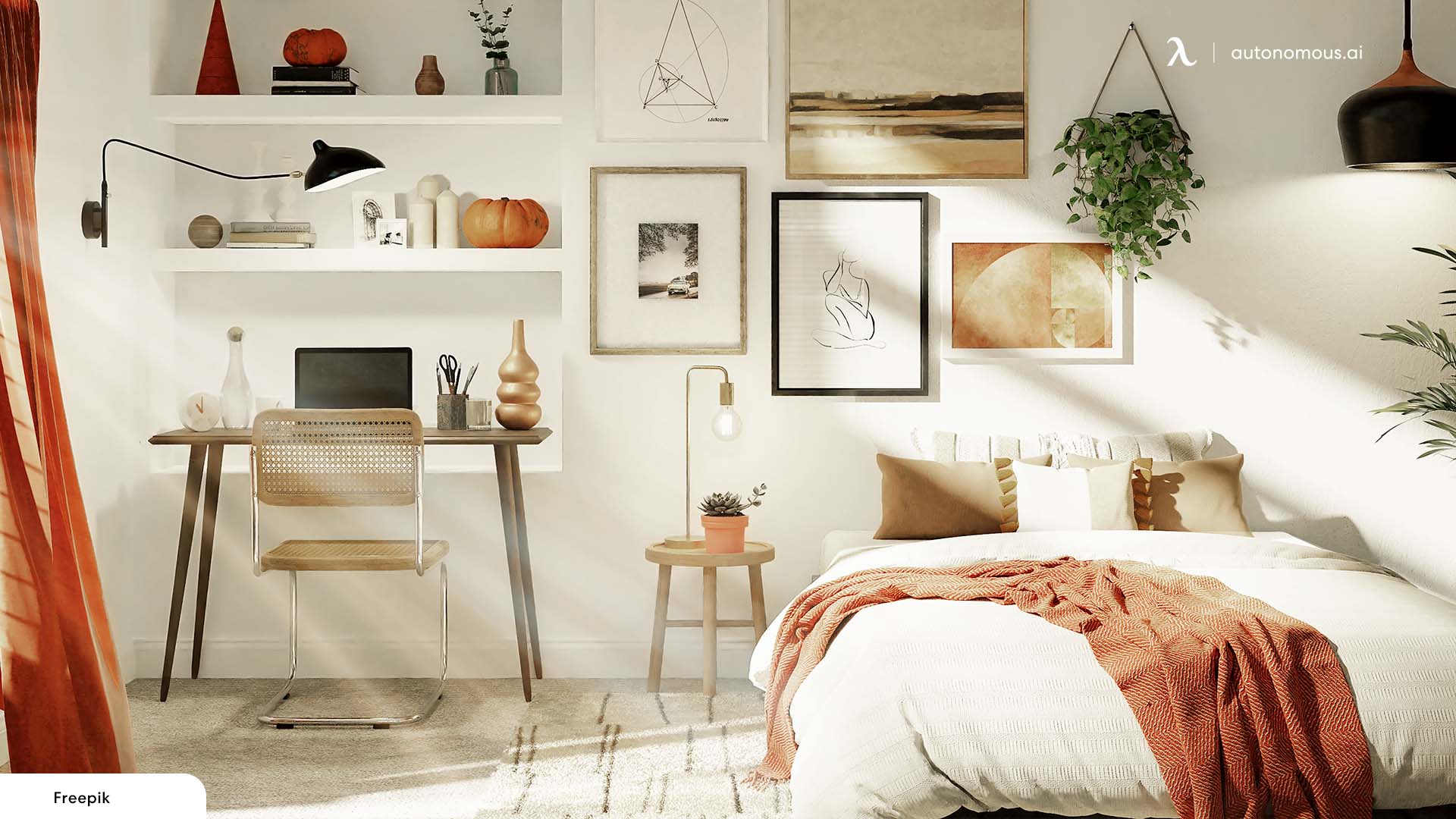
VII. Conclusion: Embracing the Art of Work and Rest Integration
Designing a bedroom with a desk space requires thoughtful consideration of spatial planning, lighting, color schemes, materials, and ergonomics. By carefully balancing the functional needs of a workspace with the tranquility of a restful retreat, you can create a harmonious environment that promotes productivity, creativity, and well-being. Embrace this opportunity to tailor your living space to suit your modern lifestyle, where work and rest seamlessly intertwine, supporting you in achieving success both professionally and personally.
